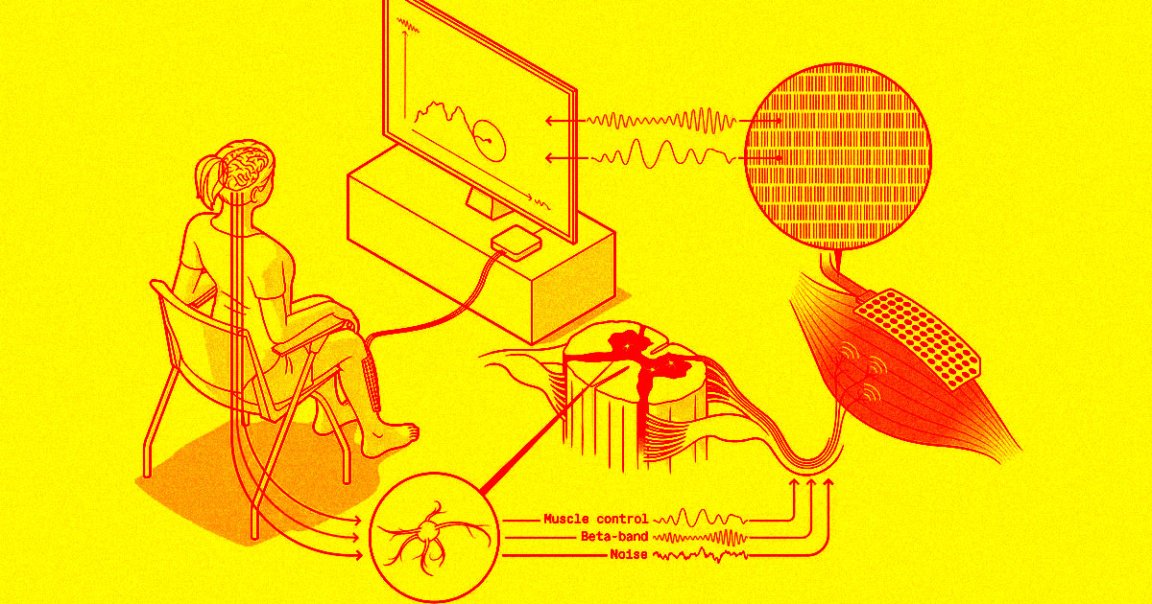
A third eye? How about a third arm? As detailed by researchers in a fascinating new piece for IEEE Spectrum, roboticists are endeavoring to perfect the technology that would control an “extra robotic hand,” ranging from a supplementary limb to a full blown exosuit — all controlled with your mind. It’s called movement augmentation, and the key to achieving it, they say, may lie with unused bandwidth in neural signals.
This could provide a “new degree of freedom” without involving other parts of your body to control it, such as using your hands on a joystick to maneuver a robotic limb. Instead, you’d control it with your mind — in theory, giving you Dr. Octopus-like capabilities.
One promising approach involves invasive brain implants called brain-machine interfaces (BMI), but because they require surgery to implant and aren’t as effective outside a lab environment, BMIs don’t provide an ideal path forward for movement augmentation, the researchers wrote in IEEE.
But another promising breakthrough has come through electromyography (EMG), which detects electrical signals sent by hundreds of spinal neurons that are received by skeletal muscles.
To translate these signals, they wrote in IEEE, the researchers created a training module that receives EMG signals produced by a user performing small muscle contractions. The module then determines what pulses of motor neurons — nerve cells that deliver signals that tell a muscle to move — comprise the EMG signals. Some heavy-duty computation later, and the training module analyzes the relationship between the motor neuron pulses and the EMG signals, essentially translating the relationship into a mathematically compatible form.
From there, the decoding module now “knows” how to read the motor neuron activity in new EMG signals produced by the same user — and it can do this in real-time, as fast as a few milliseconds — allowing what is in effect mind control of a robotic augmentation.
Nevertheless, that alone doesn’t necessarily free up your muscles’ direct involvement when controlling a robotic limb. The researchers soon discovered, however, that higher frequencies in motor neurons appeared to be essentially unused, and only lower frequencies appeared to be responsible for actual muscle control.
So in a follow up experiment, the researchers placed electrodes over a user’s tibialis anterior muscle in the shin, which is responsible for contracting the foot.
Once again, they directed users to perform small contractions, and the researchers separated the resulting frequencies in the neurons into one low band and another high band, and cleverly linked these discrete bands to horizontal and vertical cursor movement.
This is where the user’s resourcefulness came into play — there wasn’t exactly an easy explanation on how to control a cursor with your mind through signals detected in your shin. But, “remarkably,” in the researchers’ own words, the users quickly figured out how to move the cursor across the screen in the directions they desired.
“We were surprised and excited by how easily they achieved this big first step toward finding a neural control channel separate from natural motor tasks,” they wrote in IEEE.
Yet, they note that there’s still a veritable mountain of work to be done. While the users exercised deliberate control over the cursor movements, they weren’t very accurate, and applying this to a far more complex robotic limb will only be more challenging. In addition, it’s unclear if our brains are capable of developing adaptations over time that would allow users to both develop and retain “intuitive control” over external augmentation — or in other words, get used to the tech.
Still, it’s early days in this burgeoning field of robotics, though the results so far do seem encouraging.
More on brain controlled technology: Scientists Say New Brain-Computer Interface Lets Users Transmit 62 Words Per Minute